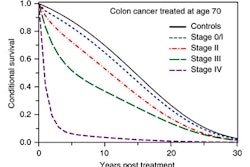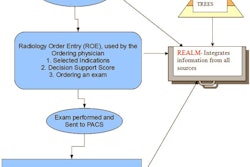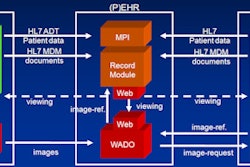Changing a facility's order-entry system -- even slightly -- can dramatically decrease the rate of low-yield imaging exams and increase the percentage of tests personally ordered by physicians, according to a new study published in the June issue of Radiology. And that's good news in a healthcare environment focused on reducing costs, especially from advanced imaging modalities such as CT, MR, and nuclear medicine.
Researchers at Massachusetts General Hospital in Boston examined the effects of a computerized radiology order-entry system that prevented nonclinician support staff from completing orders for outpatient CT, MR, and nuclear medicine exams rated "low-yield" by the system (Radiology, June 2010, Volume 255:3, pp. 842-849).
Dr. Vartan Vartanians and colleagues used a control group of 42,737 consecutive orders for exams placed from April to December 2006, in which decision support had been provided. The study group consisted of 76,238 consecutive orders placed from April to December 2007, and during this time period, a new rule was established: Exams that had low-yield decision-support scores could not be scheduled when the orders were placed by nonclinician staff. To schedule these blocked exams, the physician had to log in to the system and personally complete the order.
"One strategy developed to address both the persistent 3% to 5% low-yield rate and to encourage more clinician hands-on-keyboard use of the system was that of preventing nonclinician support staff from completing an order that generated a low-yield decision-support score," Vartanians and colleagues wrote. "Therefore, in April 2007, we introduced a change in the logic of the system such that nonclinician support staff members (nurses, office assistants) were not allowed to complete and schedule a CT, MR, or nuclear medicine examination that received a low-yield decision-support score."
After this change, the proportion of total exam requests made by clinicians who had directly logged in to the system increased from 11,243 of 42,737 exams (26.3%) to 41,450 of 76,238 exams (54.4%). Low-yield exams (categorized by scores between one and three in the decision-support system) that were, in fact, scheduled and performed decreased from 2,106 out of 38,801 exams (5.4%) to 1,261 out of 65,765 (1.9%).
Two things account for the decrease in low-yield exams ultimately performed, according to the authors: The percentage of low-yield exams initially requested decreased from 6% to 5% (p < 0.001), and what happened to orders with initial low-yield decision-support scores differed. Before the logic change, 11.4% of low-yield entries were abandoned or canceled, compared with 44.3% after the logic change.
"Perhaps the most gratifying result of our study was the overall decrease (from 5.43% to 1.92%) in the fraction of outpatient CT, MR imaging, and nuclear medicine examinations with low-yield decision-support scores during the study period," Vartanians and colleagues wrote.
And the logic change to the decision-support system didn't seem to affect exam requests to which the change did not apply. Orders with initial "marginal-yield" scores (four to six in the system) or high-yield scores (seven to nine in the system) went on to be scheduled and performed at roughly the same rate before and after the change to the decision-support system: 91% before the change and 87.8% after.
"We caught the inappropriate exams [with this logic change], which increases imaging's cost-effectiveness, reduces patients' radiation exposure, and can also eliminate having to call insurance companies and work through preauthorizations [for exams that aren't necessary]," Vartanians told AuntMinnie.com.
Some might argue that the use of an electronic order-entry system increased physicians' administrative burden. But physicians are asked only to complete the order, not to schedule it. The system replaces the use of a paper form.
"The use of the decision-support system with this change almost doubled in the study group," Vartanians said. "It means that more physicians are using the system directly, and that's what we're looking for. If more physicians use the system themselves, unnecessary exams can be avoided."
By Kate Madden Yee
AuntMinnie.com staff writer
June 1, 2010
Related Reading
ACR offers imaging appropriateness app, April 14, 2010
Medical apps on iPhone demonstrate value, potential, November 30, 2009
Could decision-support software help radiology fend off RBMs? April 7, 2009
Decision-support software cuts imaging procedure volume, March 24, 2009
CT protocol ordering software increases efficiency, January 29, 2009
Copyright © 2010 AuntMinnie.com




















